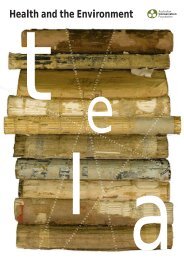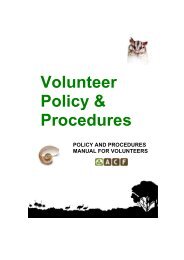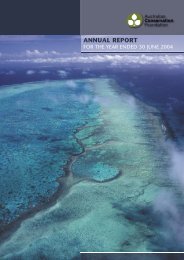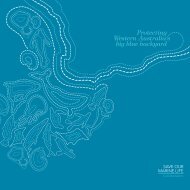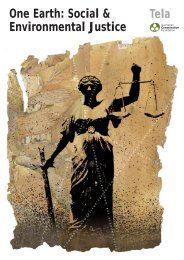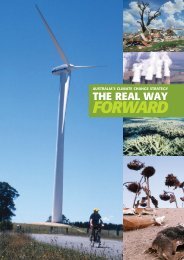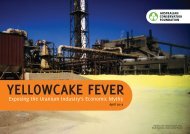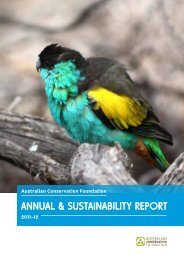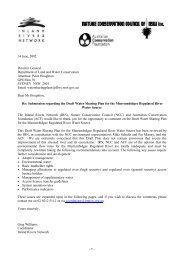habitat July 2012 - Australian Conservation Foundation
habitat July 2012 - Australian Conservation Foundation
habitat July 2012 - Australian Conservation Foundation
Create successful ePaper yourself
Turn your PDF publications into a flip-book with our unique Google optimized e-Paper software.
Biodiversity<br />
Bilbies on burrowed time<br />
A thriving population of bilbies have been unearthed at James Price Point,<br />
reports James Norman, smack bang in the middle of the proposed Browse gas hub.<br />
When a mining company sets its sights on industrialising<br />
a region newly listed with National Heritage status it’s<br />
worth checking (and counter checking) their claims about<br />
potential impacts on local biodiversity.<br />
Such is the case at James Price Point in the Kimberley where<br />
Woodside, BHP Billiton, BP, Chevron and Shell are attempting to<br />
build the joint venture Browse gas hub.<br />
The Woodside Browse LNG Precinct Environmental Impact<br />
Assessment stated there ‘was scant evidence of Greater Bilby<br />
activity’ in the region – so a group of researchers from Melbourne<br />
University supported by the <strong>Australian</strong> <strong>Conservation</strong> <strong>Foundation</strong><br />
decided to test this claim.<br />
The Greater Bilby is listed under the Environment Protection<br />
Biodiversity and <strong>Conservation</strong> Act 1999 as a vulnerable species as<br />
its <strong>habitat</strong> has substantially declined in recent years.<br />
Concerned about the legitimacy of Woodside’s impact<br />
assessment, ACF joined forces with The Wilderness Society<br />
and Environs Kimberley late last year to inform Tony Burke,<br />
Minister for Sustainability, Environment, Water, Population<br />
and Communities, of Woodside’s work program and clearing<br />
operations.<br />
The research team installed night cameras close to James<br />
Price Point, in an area earmarked for bulldozer clearing for<br />
Woodside’s exploration work. The footage revealed photographic<br />
and video evidence of active adult and juvenile bilbies, as well<br />
as over 40 burrows with fresh diggings – clearly indicative of a<br />
resident population*.<br />
As far as we are aware this is the only recorded population on<br />
the Dampier Peninsula bioregion – an area of 83,460 km2. The last<br />
confirmed report of a live bilby on the Dampier Peninsula was in<br />
1991, making this recent find highly significant.<br />
The elusive furry residents discovered at James Price Point are<br />
the only breeding population currently known of in the Dampier<br />
Peninsula bioregion.<br />
Minister Burke’s response to the bilby sightings has not<br />
provided any more certainty for the protection of this threatened<br />
species; “Woodside are aware of the need to consider impact<br />
on matters of national environmental significance, such as the<br />
Greater Bilby and have indicated that they will consider referral of<br />
activities that are likely to significantly impact on the species”.<br />
* The findings of this research have been compiled into a report<br />
‘Evidence of the Greater Bilby, Macrotis lagotis at the site of the<br />
proposed James Price Point Browse LNG Precinct’. The report presents<br />
the findings from a community survey conducted in collaboration<br />
with the Goolarabooloo traditional custodians.<br />
For more information visit www.acfonline.org.au/kimberley<br />
10 <strong>habitat</strong> <strong>July</strong> <strong>2012</strong>



